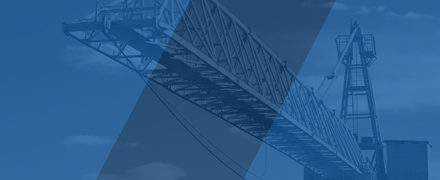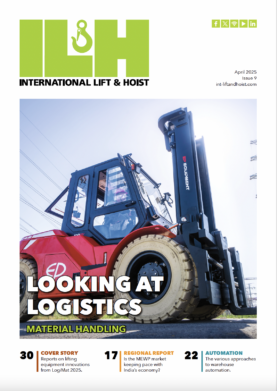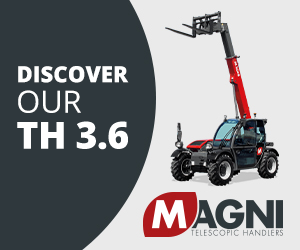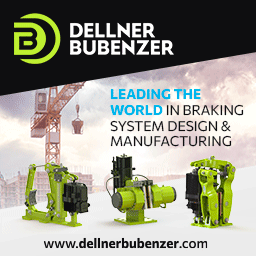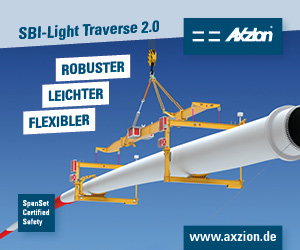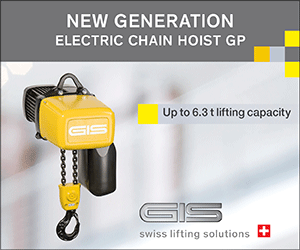)
Location, location, location
Proximity has always been important, but now life and business have been supercharged by immediacy too. Prepare for take-off, writes Joel Cox.
I heard about a long-running television show once on my travels in the UK called, ‘Location, Location, Location.’ I think it was based on the cliché used in property parlance that the three most important things when buying or selling a house are: one, location; two, location; and three, you guessed it, location.
I was reminded of this recently when I relocated to Wilmington, a port city in New Hanover County, North Carolina. With all the technology in today’s world, the only important things when choosing our new family home were proximity to what we needed and peace of mind that we would be safe and secure in our leisure and professional endeavours.
There is a natural charm about living in a historic port, and it has reminded me that life and business still rely on so much that has always been there. When we talk about technology – artificial intelligence (AI), Internet of Things (IoT), automation, etc – we too often refer to it in terms of replacement of what we hold near and dear, not an enhancement of it.
Our conversations about where to set-up our new home were much the same as they would have been in a family setting generations ago. Our eldest child is finishing up college at the University of North Carolina Wilmington (UNCW) and another plans to attend Cape Fear Community College upon high school graduation in a month or so. The family is planting roots in the area, and we intend to grow together over the coming years. My wife and I are hoping to achieve a better work-life balance, while our children will transition into the professional world with the strongest possible support network at home.
Note that nowhere was technology involved in this relocation, only in that we were first able to view the property online and we could use Google to search for things in the area that we might not have already known about. In essence, it was tech free. We can lose sight of what’s really important in a digital world and it goes back to that muddled mindset that it’s an either/or scenario – not that we are a successful species striving for constant improvement and technology is helping us along the way.
When I finish work during the week, it’s been fun to make the 10-minute drive to the beach or stroll the historic riverwalk and take in some of the sights and sounds of our new downtown environment. I might scroll through my cell phone or take a selfie, but the process and the mindset is as it would have been when our forefathers made the same trip.
In the lifting industry, we are lucky to have a daily – constant, even – reminder about enduring principles in our ongoing battle with gravity. It doesn’t matter how technologically advanced our systems become, or how much computer-aided design (CAD) is employed for lift-planning, if there is a mishap, the load comes crashing back down to earth. In fact, we only have a lifting industry because items cannot float in the air and be pushed around as though they might be in outer space.
Bulletproof aircraft
What we must come to terms with, however, is the reality that life and business have been supercharged by immediacy. And that is increasingly seeing us take to the skies. I wrote in another article recently that helicopters are being more widely utilised by the wind energy sector. I noted the growing presence of chopper brands, like Airbus, Bell, and Sikorsky, at trade shows. It makes perfect sense, with modern-day turbines reaching to over 850ft and being located as many as 50 nautical miles offshore.
Helicopters are built to fly up and out, after all. As I put it, it’s rotors serving rotors.
But renewable energy isn’t alone. The takeaway meal culture and the tune of same-day delivery that the retail sector has to dance to, is infiltrating all facets of life. We see the aerial market pivoting towards transit, with a need-to-move-now mentality. We’re approaching the point where waiting for the next truck to pull into the yard, or the next scheduled overnight shipment, is not fast enough. Electric vertical take-off and landing (eVTOL) aircraft are becoming more prominent. Companies like Archer and Vertical Aerospace are developing eVTOL aircraft for use in so-called urban air mobility networks. Where this ends up from an air traffic standpoint remains to be seen.
It reminds me of the Flying Cars from the classic Hanna-Barbera cartoon, The Jetsons. When families sat down to watch this in the 1960s, they would have scoffed at the possibility that this might one day become a reality but look where we are today.
At heart, though, George; Jane; Judy; and Elroy Jetson; along with Astro, the dog; and Rosie, the robot maid, were a normal family. They achieved the balance that I think we should all better try to create, even if we must acknowledge the reality that we’ll be expected to deliver against expectations faster than ever before.
The sense of real time has reached a level I have never seen before professionally. In the case of our business, we have shined like a star on many instances, because we have stocking centres around the world. Location, Location, Location, I could say. Further proof that one can’t beat good old-fashioned proximity to the point of use. I would estimate that 25% of my time is now spent confronting this reality – homing in on bullet-proofing supply chain thinking and shifting to meet demands. Many times, whether it be aftermarket or original equipment manufacturer (OEM) business, we play Nostradamus on trying to predict the future.
The only thing we’re certain about, is that people aren’t going to start becoming more patient. Dellner has even acquired businesses with a global but local supply chain in mind.
Fasten your seatbelts.
Winds of change
As a stakeholder in the wind energy sector, I understand how developments in the lifting industry impact our day-to-day work. Think of the cranes and hoists we rely on hourly, for example. We’ve all been closely watching as Columbus McKinnon intends to buy Kito Crosby – with the deal expected to close later this calendar year.
I’m especially interested to see what the knock-on impacts might be, given that Airpes is just one product portfolio squarely focussed on wind, and part of the Crosby portfolio.
Watch this space.
Lifting Careers, Building Futures
I read with interest that the Lifting Equipment Engineers Association (LEEA) is inviting members and non-members to help build the future of the industry by taking a survey, ahead of Global Lifting Awareness Day’s (GLAD) return on 12 June. And I’d encourage everyone to take part ahead of the looming deadline on 25 April.
If readers missed that opportunity, the wider #GLAD2025 (as it exists on social media) is worth backing, especially with the theme, “Lifting Careers, Building Futures,” being wholeheartedly adopted by campaigners this year.
I am seeing living proof of the shortages in the market of qualified younger individuals as we are continually looking for fresh talent here in the U.S. Many companies that did not create their own training systems internally will feel the pain in years to come of missing tradespeople.
As LEEA says, the lifting industry plays a crucial role in global infrastructure, construction, manufacturing, logistics, and more, yet many employers globally are struggling to recruit and retain skilled professionals. As recruitment challenges intensify, we need practical solutions to help businesses identify, develop, and retain top talent.
While supporting GLAD more generally, I’ll be looking forward to hearing about the findings of LEEA’s survey, and I’m excited to learn more about the launch of a special report that highlights the most pressing issues related to skills shortages, skills gaps, and recruitment across the lifting sector.
Put 12 June in your diary.
Low-hanging fruit
We continue to report positively on the state of business. Importantly, we are seeing the value in constant investment in our enterprise resource planning (ERP) system, which can be overlooked as a solution to companies’ pain points.
For example, one recent enhancement we made was to eliminate the need for multiple ERP logins to access global data. It has added efficiency to many tasks and lowered the barrier to important metrics that previously felt out of reach.
Another improvement has been migrating our worldwide wind team to Microsoft Dynamics 365, which is an integrated suite of ERP and customer relationship management (CRM) applications. Sales, customer service, field service, operations, finance, marketing, etc. are now neatly wrapped up in one place.
I’ve heard a number of business leaders commentating on issues they’re experiencing recently and wonder if returning to basic principles and looking closer at systems like ERP and CRM, would help them navigate their way to calmer waters.
Are you searching too high for solutions that might be within closer reach?


